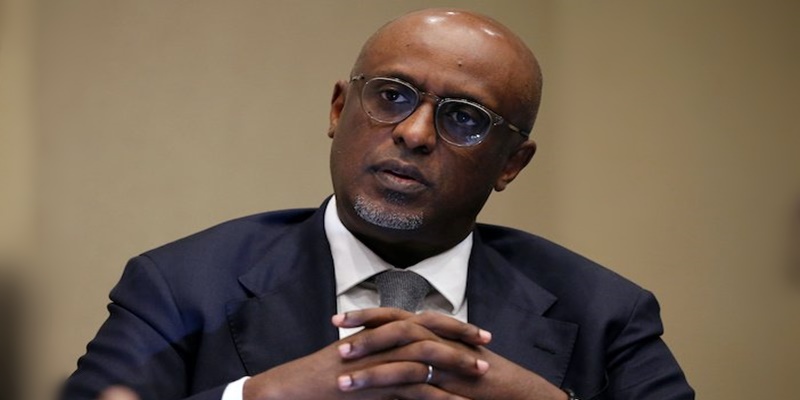October Regional Economic Outlook for Africa

Barely six months ago, as we were coming to grips with Russia’s invasion of Ukraine, we warned of uncertain times ahead, with risks tilted very much to the downside. Sad to say, many of those risks have materialized.
Global inflation has turned out to be higher and more persistent than expected, prompting a cost-of-living squeeze for most households and a general tightening of monetary policies worldwide. In addition, global prices for key commodities are increasingly volatile, while the lingering impact of the COVID-19 pandemic continues to weigh on economic activity.
In this context, I would like to draw on our latest assessment and take a moment to…
… reflect on how the global downturn is affecting sub-Saharan Africa
As we mentioned in April, the region showed some welcome signs of recovery toward the end of 2021 as the worst of the pandemic eased. But that recovery has been interrupted.
We expect growth to slow sharply this year from 4.7 percent in 2021 to 3.6 percent—as a worldwide slowdown, tighter global financial conditions, and volatile commodity prices spill into a region already weary from a prolonged pandemic. Looking ahead, growth is expected to remain subdued next year, averaging only 3.7 percent in 2023.
Unsurprisingly, however, this outlook differs significantly across countries.
- Oil exporters in particular stand to gain from higher oil prices and will grow by 3.3 percent this year, up from 3.0 percent last year.
- Other-resource intensive economies, on the other hand, will only grow by 3.1 percent in 2022, down from 5.1 percent last year.
- Non-resource-intensive countries, which enjoy a more diverse economic structure, will continue to be among the region’s most dynamic economies. But in line with a worsening in their terms of trade, they will only grow by 4.6 percent in 2022, down from 6.4 percent last year.
Against this backdrop, and with limited options, many countries find themselves pushed closer to the edge.
The most recent turmoil is just the latest in a series of shocks over the past few years, all of which have taken a toll on the region’s policy space. Rising food and energy prices are striking at the region most vulnerable. Public debt has reached almost 60 percent of GDP, leaving the region with debt levels last seen in the early 2000s. In fact, 19 of the region’s 35 low-income countries are now in debt distress or at high risk of distress. And inflation rates are in double digits for 40 percent of the region’s economies.
For authorities, this is the most challenging policy environment in years. Policymakers in sub-Saharan Africa will need to deal immediately with economic and humanitarian crises as they emerge, while also building buffers and reducing vulnerability to future shocks as best they can. In addition, the region’s prosperity will require high-quality growth, so policies must also set the stage for a sustainable recovery.
With these goals in mind, the October Regional Outlook emphasizes four policy priorities:
- The first priority is to tackle food insecurity—protecting the most vulnerable with a focus on channeling scarce resources to those who need them most.
- Next, authorities will need to continue consolidating public finances amid more difficult funding conditions. This will require: continued revenue mobilization; a tighter focus on critical spending priorities; increased efficiency; and prudent debt management within credible medium-term fiscal frameworks.
- Also, authorities should take steps to contain inflation, by cautiously and gradually increasing interest rates, without jeopardizing the economic recovery or undermining longer-term credibility.
- Lastly, policymakers should continue setting the stage for high-quality growth, in a context of accelerating climate change. Investment in resilient and green infrastructure is critical, not least to take advantage of the region’s formidable endowment of renewable energy resources.
As a final comment, I would like to stress the critical importance of international assistance.
Budget support—including official development financing and humanitarian assistance—has been declining over the past two decades while the region’s immediate and longer-term development needs have been rising, particularly in areas such as food security and climate change.
More is needed. And as we look forward to the forthcoming UN Climate Change Conference in Egypt (COP-27), it should be noted that increased support—including more concessional finance—is necessary for sub-Saharan Africa to pursue a low-carbon and climate-resilient growth path.
The IMF is helping catalyze new capital inflows by boosting local capacity on climate strategy issues while flexibly expanding its lending facilities with our Resilience and Sustainability Trust to provide affordable financing to address longer-term structural challenges, including climate change—I’d note in this regard that we have recently come to a Staff Level Agreement with Rwanda on a potential arrangement under this facility. Most recently, we have launched a new food shock window under our emergency lending facilities, which will help qualifying members mitigate the impact of the current emergency. We have also provided close to $50 billion in financial support to sub-Saharan Africa since the beginning of the pandemic.
With help, sub-Saharan Africa will be poised to fulfill the promise of the African century, contributing to a more prosperous, greener future for the region and the world.
By Abebe Aemro Selassie,
Director, IMF African Department.
